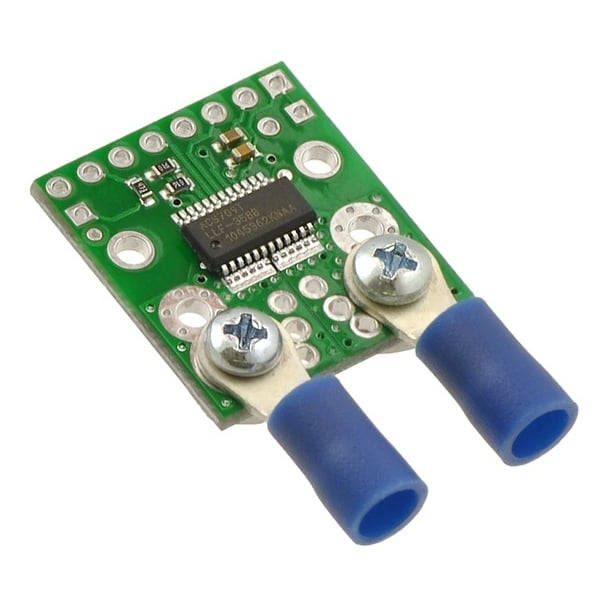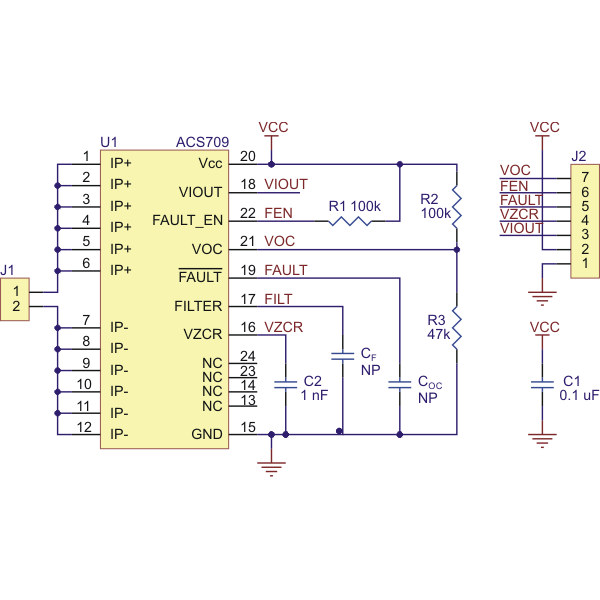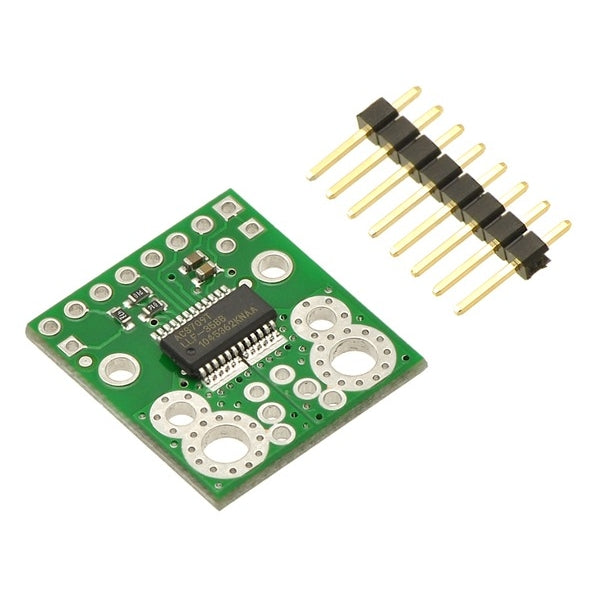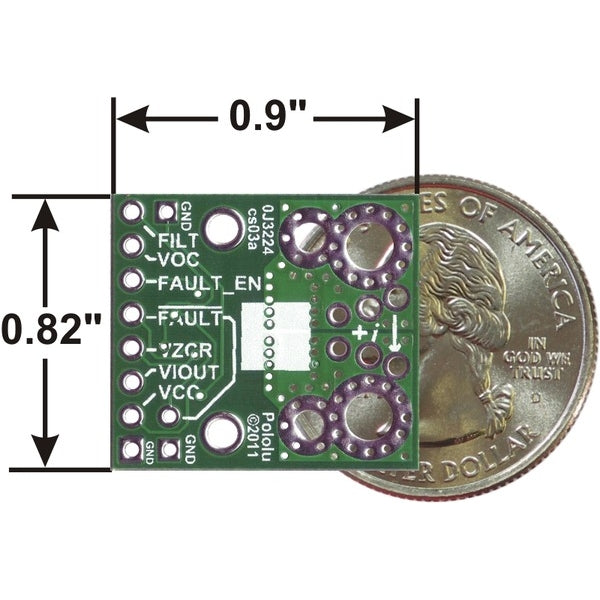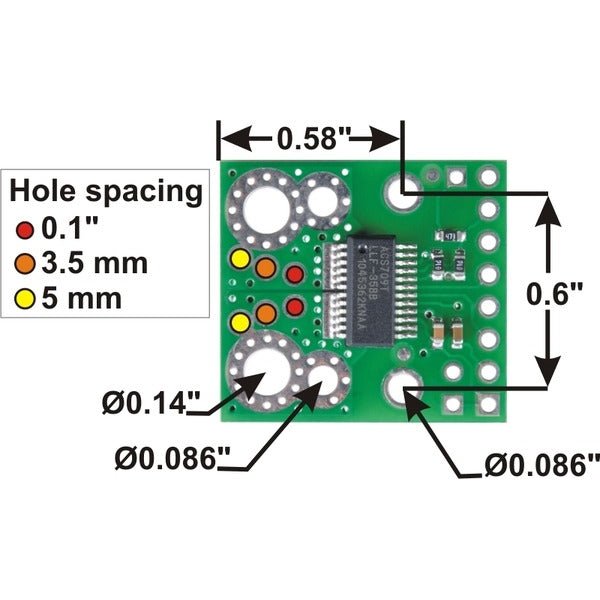Description
- Optimized accuracy for bidirectional input current from -37.5 to 37.5 A, with a linear sensing range from -75 to 75 A (see warning note below for thermal limitations).
- Conductive path internal resistance is typically 1.1 m?, and the PCB is made with 2-oz copper, so very little power is lost in the board.
- Integrated shield greatly reduces capacitive coupling from current conductor to die and prevents offset drift in high-side applications.
- Use of a Hall effect sensor means the IC is able to electrically isolate the current path from the sensor?s electronics (up to 2.1 kV RMS), which allows the sensor to be inserted anywhere along the current path and to be used in applications that require electrical isolation.
- 120 kHz bandwith that can optionally be decreased by adding a capacitor across the board pins marked ?FILT?.
- High accuracy and reliability: typical total output error of 2% at room temperature with factory calibration, an extremely stable quiescent output voltage
- Automotive-grade operating temperature range of -40°C to 150°C.
- User-settable overcurrent threshold: FAULT pin output latches low when current exceeds the configured threshold for a duration that can be set through the addition of an external capacitor.
- Size: 0.82? x 0.9?
- Weight: 1.7 g1
- Current sense: 0.018 V/A2
- Minimum logic voltage: 3 V
- Maximum logic voltage: 5.5 V
- Supply current: 11 mA
- 1. Without included hardware.
- 2. When Vcc is 3.3 V. This specification is proportional to Vcc.
Encrypted payment
Your payment information is processed securely. We do not store credit card details nor have access to your credit card information.
Customs Tariff Number:
Country of origin:
This depends on where you are located. After the order is handed over to UPS, the delivery time in Germany is about 2-3 days, within Europe about 1 week.
We ship our orders with UPS (United Parcel Service).
If we still haven't answered your question, you can contact us below and we will get back to you as soon as possible.



